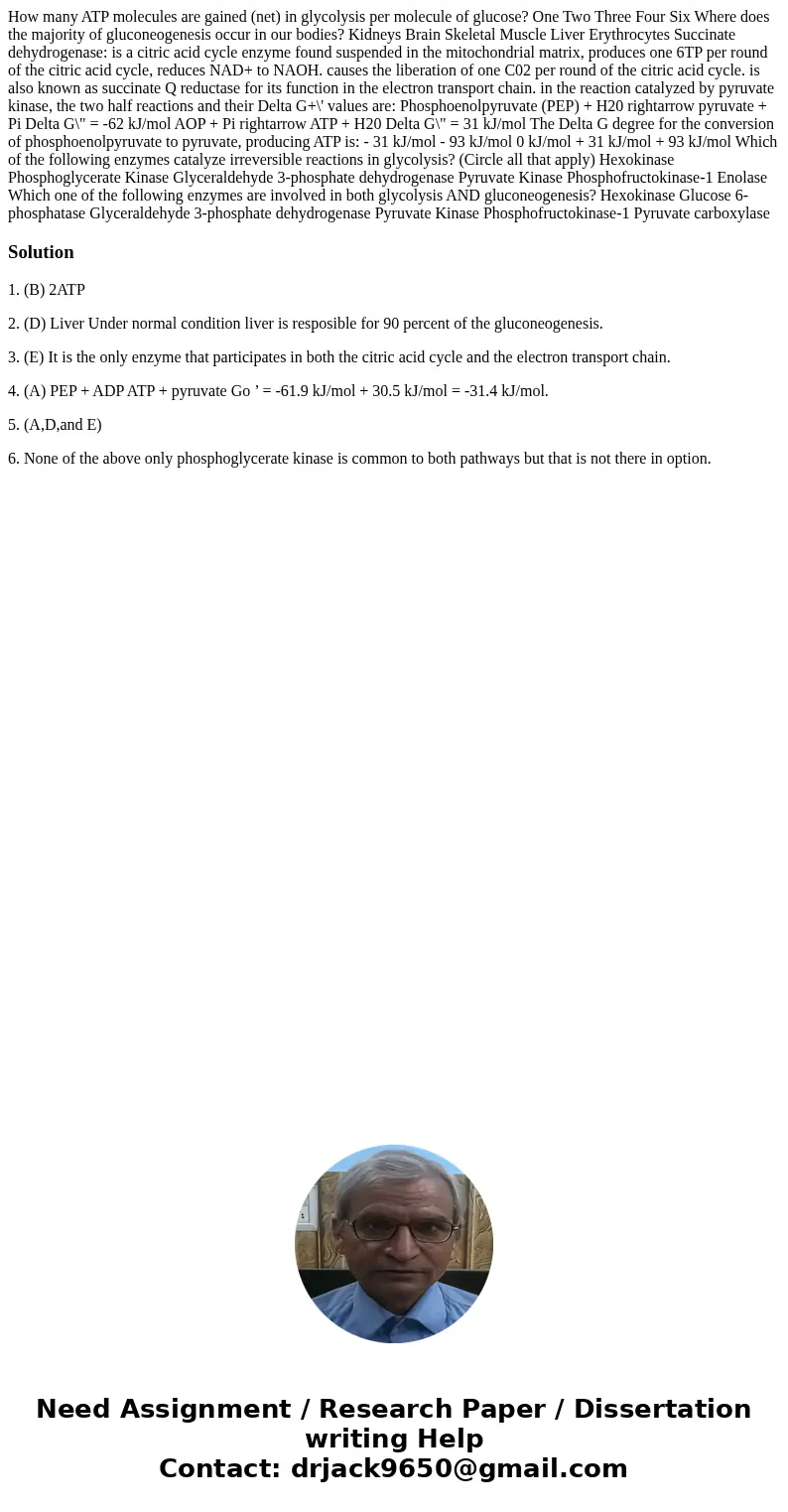How many ATP molecules are gained net in glycolysis per mole
How many ATP molecules are gained (net) in glycolysis per molecule of glucose? One Two Three Four Six Where does the majority of gluconeogenesis occur in our bodies? Kidneys Brain Skeletal Muscle Liver Erythrocytes Succinate dehydrogenase: is a citric acid cycle enzyme found suspended in the mitochondrial matrix, produces one 6TP per round of the citric acid cycle, reduces NAD+ to NAOH. causes the liberation of one C02 per round of the citric acid cycle. is also known as succinate Q reductase for its function in the electron transport chain. in the reaction catalyzed by pyruvate kinase, the two half reactions and their Delta G+\' values are: Phosphoenolpyruvate (PEP) + H20 rightarrow pyruvate + Pi Delta G\" = -62 kJ/mol AOP + Pi rightarrow ATP + H20 Delta G\" = 31 kJ/mol The Delta G degree for the conversion of phosphoenolpyruvate to pyruvate, producing ATP is: - 31 kJ/mol - 93 kJ/mol 0 kJ/mol + 31 kJ/mol + 93 kJ/mol Which of the following enzymes catalyze irreversible reactions in glycolysis? (Circle all that apply) Hexokinase Phosphoglycerate Kinase Glyceraldehyde 3-phosphate dehydrogenase Pyruvate Kinase Phosphofructokinase-1 Enolase Which one of the following enzymes are involved in both glycolysis AND gluconeogenesis? Hexokinase Glucose 6-phosphatase Glyceraldehyde 3-phosphate dehydrogenase Pyruvate Kinase Phosphofructokinase-1 Pyruvate carboxylase
Solution
1. (B) 2ATP
2. (D) Liver Under normal condition liver is resposible for 90 percent of the gluconeogenesis.
3. (E) It is the only enzyme that participates in both the citric acid cycle and the electron transport chain.
4. (A) PEP + ADP ATP + pyruvate Go ’ = -61.9 kJ/mol + 30.5 kJ/mol = -31.4 kJ/mol.
5. (A,D,and E)
6. None of the above only phosphoglycerate kinase is common to both pathways but that is not there in option.

 Homework Sourse
Homework Sourse